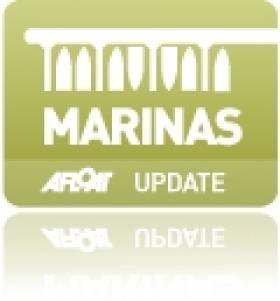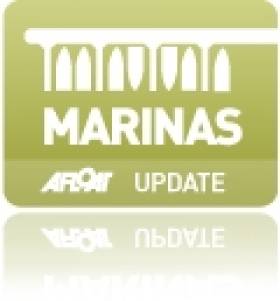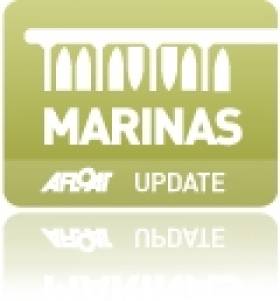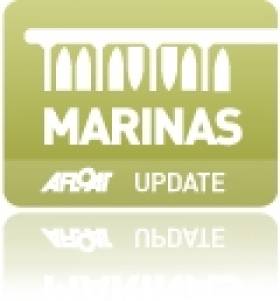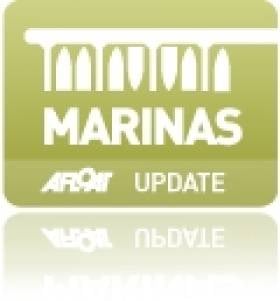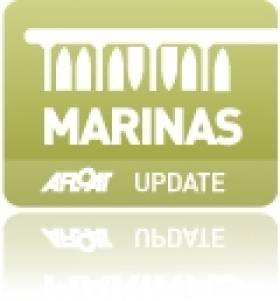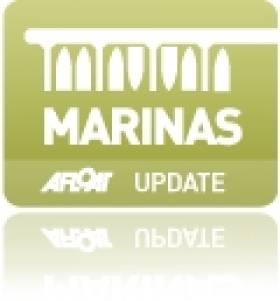Displaying items by tag: pontoon
Grand Canal Marina, Dublin City. Yacht & Boat Berths in Dublin
The Grand Canal Marina in the inner dock of the Grand Canal Basin has a landmark 'Box in the Docks' building familiar to many Dubliners. The 50-berth facility opened in 2004 and has become an asset for boaters in the city centre especially during festivals such as the recent Tall Ships visits, permitting boating access and overnight stays (albeit via a sealock) in Dublin city.
Sligo Harbour Pontoon. Berthing for Yachts & Boats in Sligo
The pontoon jetty at Ballast Quay in Sligo is designed to be used primarily for day trips or shortterm stays in the City. The facility is made available for use by owners and authorised crew of leisure craft owned, managed and operated by Sligo County Council (SCC).
The pontoon is available to all local and visiting leisure craft and also available for long-term berthing either with or without crew.
The pontoon will also be available on a limited basis to sailing clubs wishing to host events during the sailing season.
Access to the Jetty area and to the pontoon is controlled by security coded locks, which (in the interests of security) are changed on a regular basis.
A pdf download of the Sligo County Council rules for the jetty is downloadable as a pdf document below

The boating pontoon at Ballast Quay in Sligo. Photo: WM Nixon
The Royal St. George Yacht Club in Dun Laoghaire harbour offers fully serviced berthing for yachts up to 70ft with pontoons automatically lit and are equipped with shore power. Nightly rates are available. A security card service for visitors gives access to the Yacht Club.
Arthurstown Pier Pontoon. Boat Berths in County Wexford
Arthurstown Pier is at Waterford Harbour’s eastern shore, seven miles north of Hook Head lighthouse. It is directly east of Passage East. The small quay has a stone bottom. In 2010, following the provision of €56,250 to improve boat access on piers along the Hook Peninsula such as Ballyhack, Slade and Arthurstown Wexford County Council installed a small pontoon facility to encourage leisure boating in the area. As well as local boaters the faciility is also proving popular with local fishermen.
Portmagee Harbour Pontoon. Boat Berths in Kerry
After first hatching its harbour plan over five years ago, National Tourism Award winning village Portmagee in County Kerry now looks certain to see a new pontoon finally installed at Portmagee pier in 2013. It will be a further boost for a Kerry already popular with visiting yachts and boats.
The idea is to link the network of facilities that terminate in West Cork with new facilities in County Kerry and Portmagee will be an important link in this process.
The plans are that both local Skellig Rock tourism boat operators and up to 20 visiting yachts at any one time can use the new village pontoon once it is installed.
The facility is being developed through a local community initiative with funding from Kerry County Council and Failte Ireland.
Duncannon Pier Pontoon. Berths for Boats in County Wexford
Duncannon Pier Pontoon is at Waterford Harbour’s eastern shore, six miles north of Hook Head lighthouse. It is a small fishing port where you may come alongside the commercial wall. In 2010, following the provision of €56,250 to improve boat access on piers along the Hook Peninsula such as Ballyhack, Slade and Arthurstown Wexford County Council installed a small pontoon facility to encourage leisure boating in the area. As well as local boaters the faciility is also proving popular with local fishermen.
Passage East Pontoon. Berths for Boats in County Waterford
Dromquinna Manor Pontoons. Berths for Boats in Kerry
Boating facilities at the Dromquinna Manor resort in Kerry include pontoon berths offering the boating enthusiast a wonderful base to enjoy the south-west coast. The current facility comprises a long jetty in the Kenmare river.
Dun Laoghaire's National Yacht Club has a small pontoon facility with limited berthing for visiting yachts. The facility also has diesel, water, power and overnight facilities are available to cruising yachtsmen with shopping facilities being a short walk away
The club's pontoon is primarily used by its members for the short term securing of dry sailec boats prior to and after racing.
Boats dry-sailing from the platform and Club launches/RiB's have priority on the inside pontoons.
There is also a marked area for launches onto which no other vessel should berth.
Fuelling alongside may be arranged at non-racing times.
Boats may not remain overnight without the approval of the Club Boatman, unless arriving after service hours. The rate for berths are available from the club directly.
Foynes Yacht Club has a small pontoon facility at its base on the Shannon Estuary in County Limerick. The pontoon accommodates approximately eight visiting boats, four club boats, plus club rescue boats and up to 12 dinghies.
The club is located at Cooleen Point, Foynes, County Limerick, Ireland. Tel: +353 69 65261 Location: Latitude: 52°36"54' N Longitude: 09°06"484' W



























